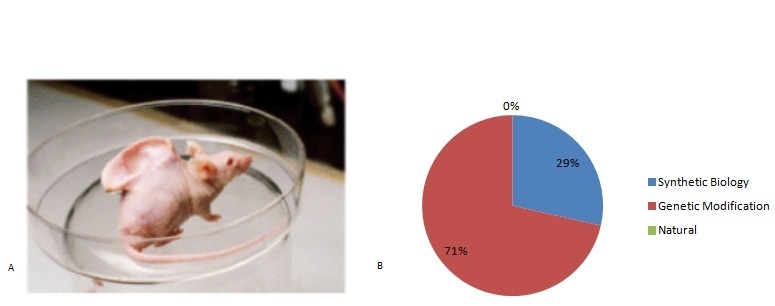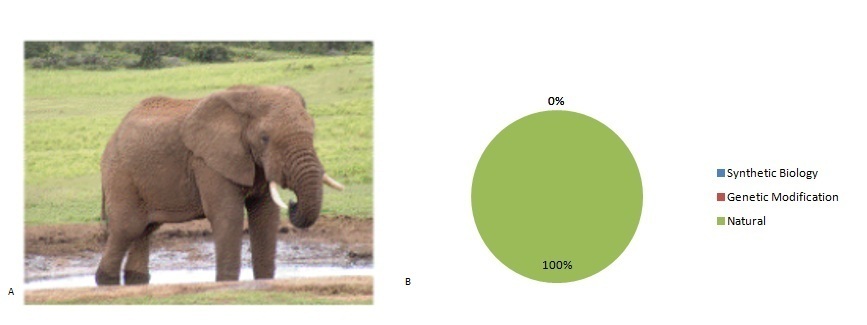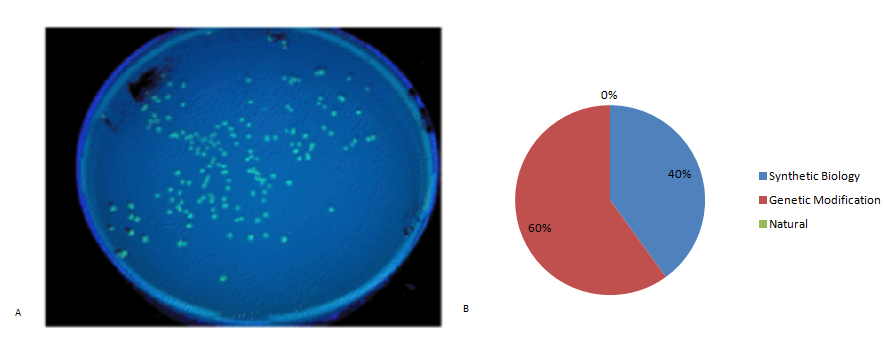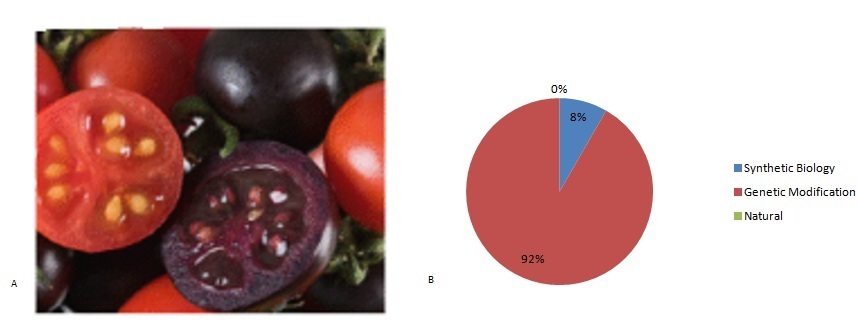Team:UEA-JIC Norwich/Human practices/Interviews
From 2011.igem.org
| (4 intermediate revisions not shown) | |||
| Line 26: | Line 26: | ||
<br> | <br> | ||
<br> | <br> | ||
| - | In order to collect quantitative data, we showed participants the following images during each interview and asked them to determine whether they perceived the image as | + | In order to collect quantitative data, we showed participants the following images during each interview and asked them to determine whether they perceived the image as a representation of Synthetic Biology, Genetic Modification, nature or even combinations of all three. |
<br> | <br> | ||
<br> | <br> | ||
| - | + | Image 1.A shows a Tricolour Beagle dog, which was selectively bred to give the modern breed. Figure 1.B shows that 86% of the people we interviewed perceived the Beagle to be natural. However, 14% concluded it may also be genetically modified in terms of selective breeding, although does not involve the introduction of genes from a different species. | |
<br> | <br> | ||
[[File:Wiki beagle.jpg]] | [[File:Wiki beagle.jpg]] | ||
<br> | <br> | ||
<br> | <br> | ||
| - | + | Image 2.A. shows an image of Dr Jay Vacanti work of successful growth of a human ear from cartilage cells on the back of a mouse. Figure 2.B shows that 29% of people associated the image with synthetic biology, and 71% associated it with Genetic Modification. | |
|- | |- | ||
| | | | ||
| Line 40: | Line 40: | ||
<br> | <br> | ||
<br> | <br> | ||
| - | + | Image 3.A. shows an image of a wild African bush elephant. Figure 3.B shows that 100% of people recognised it was natural. | |
|- | |- | ||
| | | | ||
| Line 46: | Line 46: | ||
<br> | <br> | ||
<br> | <br> | ||
| - | + | Image 4.A. shows an image of an agar plate containing e.coli that has been transformed to express green fluorescence protein (GFP). Figure 4.B shows that 60% of people considered this to be Genetic Modification, and 40% considered this to be Synthetic Biology | |
|- | |- | ||
| | | | ||
| Line 52: | Line 52: | ||
<br> | <br> | ||
<br> | <br> | ||
| - | + | Image 5.A. shows an image of purple tomatoes, which scientists have developed which may boost health due to their anti-cancer properties. Figure 5.B shows how 92% of people understood the purple tomatoes to be Genetically Modified, whereas 8% thought it was Synthetic Biology. | |
|- | |- | ||
| | | | ||
| Line 81: | Line 81: | ||
<h1 style="font-family:verdana;color:green">Interviews</h1> | <h1 style="font-family:verdana;color:green">Interviews</h1> | ||
<br> | <br> | ||
| - | For our human practice we wanted to explore our central question; is | + | For our human practice we wanted to explore our central question; is Synthetic Biology feared? We did this by approaching the issue in a number of different ways. |
<br> | <br> | ||
<br> | <br> | ||
| - | Once the topic of | + | Once the topic of Synthetic Biology had been introduced we wanted to know what people’s thoughts and feelings were on the matter and why they had these opinions. We conducted a number of interviews with the general public and planned Synthetic Biology based outreach events (please see our outreach <a style="color:#7d1b7e !important" href="https://2011.igem.org/Team:UEA-JIC_Norwich/Human_practices">Human Practices</a> section) in order to gain both adults and children’s perspective. The interviews allowed us the chance to analyse responses and explore whether Synthetic Biology is in fact a feared topic. |
<br> | <br> | ||
<br> | <br> | ||
| - | Not only did we want to get people’s opinions on | + | Not only did we want to get people’s opinions on Synthetic Biology we also wanted to demonstrate that it is different from Genetic Modification and to see how many people knew of the difference between the two terms. This was achieved by offering definitions of each term during the interview and by showing a series of images which the interviewee could say they thought represented Synthetic Biology, Genetic Modification or nature. The responses from a selection of the interviews and the results for the image tests can be seen below. |
<br> | <br> | ||
Latest revision as of 20:01, 21 September 2011
|
Quantitative Data:
|
|
|
|
|
|
|
|
1. Desktop Wallpapers; Jitka Kravosa; 2011; http://www.desktop-wallpapers.org/download/pets/dogs/beagle/1024x768/
|
 "
"





















